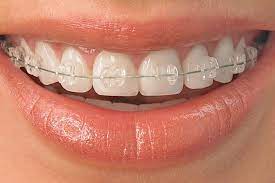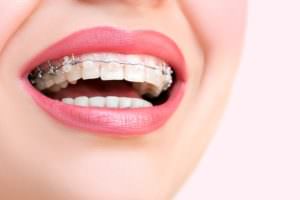How Do Braces Work?

Modern braces have been around since 1819! The initial idea is still the same, much has changed since they were first invented. While braces have been around for a while there is still some confusion leaving many wondering how do braces work?
What Are Braces Made Of?
First, let’s start by talking about what braces are made of. Braces are made of metal or ceramic wires along with bonding materials that help attach them to your teeth. The brackets and wires are often made of the same material that provides the appropriate amount of force to move your teeth.
Types of Braces
One of our experienced orthodontists will recommend a treatment plan that best fits your needs and that will depend on several factors we will discuss during your free consultation! The type of braces used for your treatment will be determined based on your age, if you have an overbite, and how crooked your teeth are. Our treatment plans are custom-made for each patient, and the type of braces that work for you is no different!
Traditional Stainless Steel Braces
Traditional braces are our most common braces treatment option. Traditional braces consist of small brackets that are glued to the surface of your teeth. With this option, patients are able to choose colored bands!

Clear Braces
Clear braces, also known as ceramic braces, are similar to metal braces but they use clear or tooth-colored brackets rather than metallic silver brackets. Clear braces are a popular choice as they are less noticeable than metal braces.

Self-Ligating Braces
Self-Ligating braces, similar to Damon braces, use brackets or clips to hold the wires in place instead of the traditional elastic ties. Self-Ligating braces can move teeth at a faster rate than traditional braces.

How Do Braces Work?
Now to talk about the fun stuff – how do braces work? Braces exert constant pressure on the teeth for an extended period of time. Eventually, your teeth and jaw adapt to the pressure and the teeth begin to move.
Underneath your gums, your bones are surrounded by a membrane that keeps your teeth to your jaw. This membrane is what controls the position of your teeth and is what will respond to the pressure being put on your teeth by braces.
Traditional braces have three major components: brackets, archwire, and elastics. All three work together to create your new smile.
Trust The Experts
Moving teeth takes time and knowledge, which is why orthodontists spend an extra three years learning the specialty to ensure your teeth and jaw are adjusted correctly. Are you interested in starting your braces journey? Schedule your free consultation at any of our 15 offices in Southeastern Wisconsin today! Trust the experts with your braces journey.
